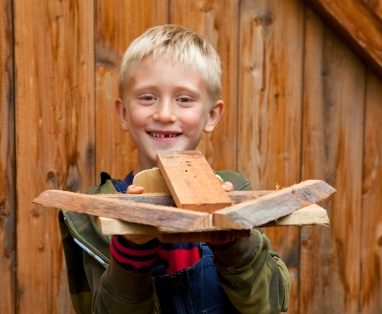 Recently our family’s dinner conversation centered on the anniversary of the BP oil spill in the Gulf of Mexico and the current disaster at the nuclear power plant in northern Japan. No, not all our dinner table topics are this sober.
Recently our family’s dinner conversation centered on the anniversary of the BP oil spill in the Gulf of Mexico and the current disaster at the nuclear power plant in northern Japan. No, not all our dinner table topics are this sober.
“Okay, which one of you said you were going to invent an efficient and inexpensive solar car?”
“It was me, Mama,” said Daniel, our ten-year old, perfectly seriously.
Hearing Daniel’s response, I remembered that he has indeed been stating for maybe two years now his plan to invent this “when he grows up.” For Daniel, who often has a new item he’s saving his allowance for every few days, this constitutes quite a commitment.
“Daniel, I’m thinking the product delivery date on that solar car needs to be moved up a few years.”
“I still want to do it, Mama.” (Again, completely serious.)
In these trying environmental and economic times, it’s inspiring to me to read about tangible innovations. I’m awed by the bright, resourceful people out there inventing better and cleaner ways to get things done.
I worry that schools in America now don’t excel at teaching kids to solve many of the thorny problems today’s world faces. (Unless the challenging predicament at hand is how to get as many answers correct as possible on an Advanced Placement exam.)
You would hope that memorizing facts is just one small instrument on a tool belt of skills kids take away from their schooling, not the main one.
So, I’ve been thinking and reading about how to encourage ingenuity and innovation in my kids. At this point, the only thing I do consistently is excitedly inform my kids about cool new inventions I hear about.
For example, a while back I heard a BBC story on a guy who invented what is basically a piece of sidewalk pavement that turns people’s footsteps into energy which can power a light or be saved in an internal battery. How novel! People already walk on sidewalks, whether these include one of these Pavegen stones or not. We might as well use this renewable footstep energy to power something. And of course it’s only a short leap to envision these pavement pieces in streets where cars could offer even greater amounts of energy to run traffic lights, perhaps. And Laurence Kemball-Cook, the inventor of this original apparatus, is in his early twenties! Inspirational.
Then there’s the article I just read about psychology professor, Alan Poling, who came up with the innovative idea to train rats (specifically Giant African Pouched Rats, which aren’t actually that large) to sniff out land mines. Since rats are lighter than dogs they are much less likely to detonate the mines while searching. Plus these rats are less expensive to house and feed, and are more resistant to tropical diseases. What an ingenious idea that’s actively saving lives!
But Alan Poling didn’t stop there. Next he decided to train rats to sniff out tuberculosis in people’s saliva samples at overseas medical labs. Turns out rats have better accuracy than lab technicians and can test hundreds of samples per day, whereas techs top out at forty daily samples. I quickly added Alan Poling to my list of current day heroes.
In the book, A Whole New Mind: Why Right-Brainers Will Rule the Future, Daniel Pink highlights the value of innovative thinking now and in the near future. Thinkers who can combine concepts from differing fields of knowledge to solve complex problems will be most needed, and highly compensated.
Pink refers to this innovation aptitude as symphony. It involves seeing patterns and synthesizing, rather than delivering specific answers and analyzing. In order to encourage this aptitude, Pink recommends various exercises including:
1. Listen to musical symphonies.
2. Read magazines on subjects you know little about. These will give you a new perspective and may offer solutions in other areas of your life.
3. Take a drawing class in order to learn more about perspective, relationship, and how pieces fit together into an integrated whole.
4. Notice and ponder metaphors when you come across them. The aptitude of symphony is enhanced by metaphorical thinking.
5. Create an inspiration board, a bulletin board of photos, drawings, pieces of material, anything that inspires you. Then notice the patterns within your board.
6. Brainstorm. This is an actual skill, not a fad. Pink teaches the basics in his book.
7. Try new things and get comfortable being an amateur. The mind of an individual first experiencing a new area of study is most likely to notice solutions which can be utilized in other fields.
Pink also recommends another book, Why Not? How to Use Everyday Ingenuity to Solve Problems Big and Small, by Barry Nalebuff and Ian Ayres. These authors suggest we look for creative solutions to problems, then consider whether these fixes can be used in other problem situations. They note that traveling to foreign countries is a good way to find innovative solutions which haven’t yet made it across borders.
Nalebuff and Ayers also promote looking at a current issue or product upside down in order to consider new ways of doing something. A thriving business generated out of this flipping technique is Priceline. Priceline flipped the old way of doing business in which airlines and hotels set prices. Instead they have the customer present the price he or she is willing to pay.
I think I’ll use many of these suggestions with my kids. I plan to start by listening to more musical symphonies and noticing metaphors. Maybe we’ll create a metaphor journal so we can reread our collection from time to time. I already have an inspiration board, but I bet this would be an engaging summer project for my kids.
And of course I can’t help myself when it comes to sharing the inspirational inventions I find.
Have you learned of any stellar inventions of late? Leave a comment!

 Sweet Spots: Helping Your Kids Find ENOUGH in Their Lives.
Sweet Spots: Helping Your Kids Find ENOUGH in Their Lives.


Since I am an avid spinner (of fiber), I thought I would share this site. http://inhabitat.com/e-charkha-spinning-wheel-by-rs-hiremath/
I love that someone would invent a way for a person to use their own power that they produce everyday to better their lives. I imagine not having electricity and having 2 hours of a small LED to clean dishes and read a bedtime story. I love the challenge of thinking “differently” and actually trying to come up with an original idea. Thank you for the challenge.
Thanks for sending that link about a spinning wheel that creates electricity while spinning and helps poor families in India. Just the kind of thing I love hearing about!
Thanks for yet another great book recommendation!
You’re so welcome!
So easy to get wrapped up in telling you a whole bunch of clever things, but just one … there’s actually a company commercializing using bees to detect faint traces of marker gases for things like diseases, or explosives. I met one of their people, a very enthusiastic, ebullient French woman, with a fantastic accent!
Then there’s my own company! 🙂
Light, stiff, strong structural tubes that can be rolled up like tape measures.
http://www.rolatube.com 😉
I love the bee idea. Another reason to work even harder against colony collapse. And your rolatube product is definitely innovative! I imagine there are all sorts of purposes for these. Cool!
I really like this topic. It is always interesting to read about innovative ideas that people have developed like those mentioned above, but bringing innovative ideas to school and, later, the workplace seems to be increasingly important. As we look across borders more and more, and become interconnected with communities around the globe, we discover so many issues cannot be solved with traditional solutions. Education, even in the US, is constantly undervalued, and I hope children will continue to be exposed to ideas like those you mention here.